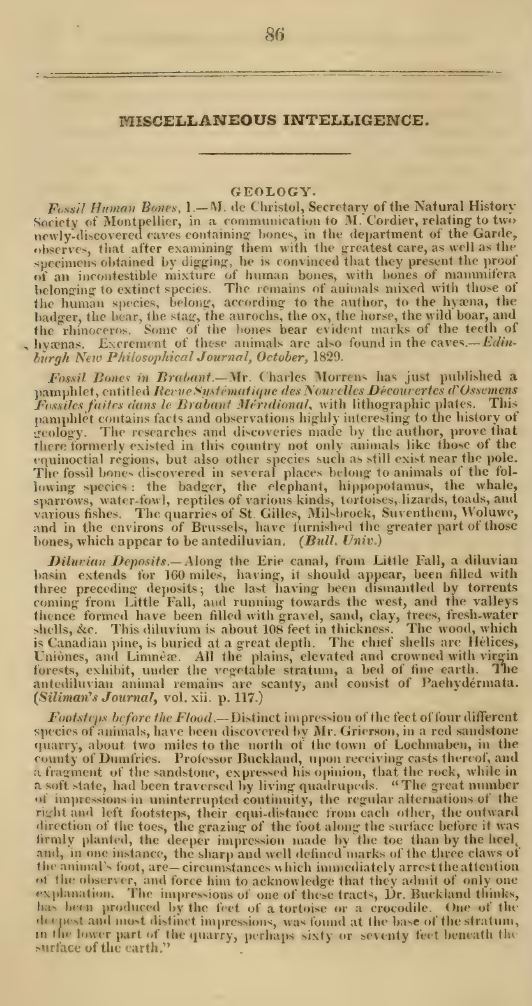Miscellaneous intelligence
DOI:
https://doi.org/10.21504/saqj.11.2622Keywords:
Fossil human bones, Mammifera, Pachydérmata, Trachelipodes, Cephalopodes, Ammonites, Nautili, Calamites, Cycadeae, Mantellia, Swan River, Diluvium, Van Diemen’s Land, Aloe, Gasteria, Aloe pluridens, Aloe gracilis, Aloe albispina, Gasteria pulchra, Gasteria maculata, Gasteria picta, Gasteria formosa, Gasteria fasciata, Uitenhage, Cape Colony -- Natural history, Geographical Society of Paris, Central Africa exploration, Marco-Polo's Travels, Hydrographical map, Turnips, Lord Townshend, Swedish turnipAbstract
This miscellaneous intelligence compilation encompasses a range of scientific and practical topics, primarily sourced from 1829 or earlier. Geologically, it reports on Fossil Human Bones mixed with extinct species (hyena, rhinoceros, etc.) in a cave in the Garde Department, France, and similar antediluvian finds (elephant, whale) in Brabant. Further reports detail diluvian deposits along the Erie Canal and distinct footprints (possibly of a tortoise or crocodile) found deep in a red sandstone quarry at Lochmaben. A detailed statistical breakdown of British fossil shells is provided, illustrating the shift in dominant mollusc groups—notably the decline of carnivorous Cephalopodes (such as Ammonites) and the subsequent rise of new carnivorous Trachelipodes after the Chalk era. Fossil plant characteristics are catalogued across formations, and a report on Australia's geology highlights the lack of active volcanoes and the importance of studying its distinct fossil-organised remains. Botany features systematic descriptions of several succulent species in the genera Aloe and Gasteria from the Cape District, including new species found by Mr Bowie, alongside notes on the prodigious seed yield of plants like the poppy and tobacco. Zoological notes briefly describe the physical appearance of Native Australians, discuss the danger of Insufflation of Animals (especially to the lungs of sheep and goats), and detail the origin of Zanzibar's cattle breed. Rural Economy sections track the introduction of turnips for fodder by Lord Townshend to Norfolk in the 18th century, and provide two novel agricultural techniques: using a mixed sowing method to protect young turnips from the turnip fly, and a detailed analysis of a new parasitic insect which attacks the ear of wheat by consuming the pollen and fluid on the stigma, effectively "castrating" the plant. Finally, Geography reports on the extensive activities and exploration prizes offered by the Geographical Society of Paris as of 1828.
Downloads

